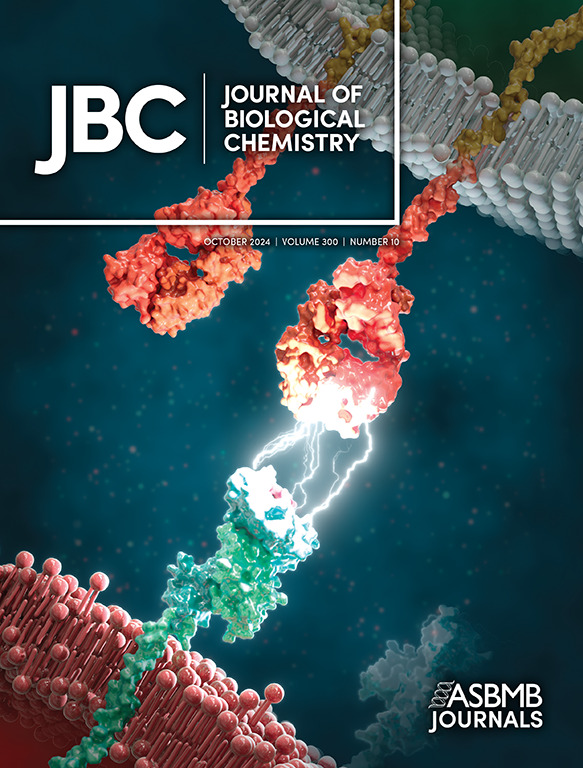帕金森病相关富亮氨酸重复激酶2 (LRRK2)的结构生物学研究
IF 4
2区 生物学
Q2 BIOCHEMISTRY & MOLECULAR BIOLOGY
引用次数: 0
摘要
亮氨酸富重复激酶2 (LRRK2)在20多年的时间里已经从一个与帕金森病(PD)有关的新基因发展成为帕金森病治疗的主要可行靶点,目前有几个针对它的临床试验正在进行中。尽管关于lrrk2还有很多需要了解的,主要包括为什么它的活性增加与pd有关,但我们也了解了很多。我们的知识在很短的时间内呈指数级增长的一个领域是LRRK2的结构生物学。这篇综述的目的是对LRRK2结构生物学的现状进行调查,重点是结构所提供的功能见解。本文章由计算机程序翻译,如有差异,请以英文原文为准。
Structural biology of Parkinson’s Disease-associated Leucine-Rich Repeat Kinase 2 (LRRK2)
Leucine Rich Repeat Kinase 2 (LRRK2) has gone, in a little over two decades, from a novel gene linked to cases of Parkinson’s Disease (PD) in one family to being the main actionable target for PD therapeutics, with several clinical trials targeting it currently underway. While much remains to be understood about LRRK2—including, chiefly, why its increased activity is linked to PD—much has also been learned. One of the areas where our knowledge has increased exponentially in a very short time is the structural biology of LRRK2. The goal of this review is to provide a survey of the current landscape of LRRK2 structural biology with an emphasis on the functional insights that structures have provided.
求助全文
通过发布文献求助,成功后即可免费获取论文全文。
去求助
来源期刊

Journal of Biological Chemistry
Biochemistry, Genetics and Molecular Biology-Biochemistry
自引率
4.20%
发文量
1233
期刊介绍:
The Journal of Biological Chemistry welcomes high-quality science that seeks to elucidate the molecular and cellular basis of biological processes. Papers published in JBC can therefore fall under the umbrellas of not only biological chemistry, chemical biology, or biochemistry, but also allied disciplines such as biophysics, systems biology, RNA biology, immunology, microbiology, neurobiology, epigenetics, computational biology, ’omics, and many more. The outcome of our focus on papers that contribute novel and important mechanistic insights, rather than on a particular topic area, is that JBC is truly a melting pot for scientists across disciplines. In addition, JBC welcomes papers that describe methods that will help scientists push their biochemical inquiries forward and resources that will be of use to the research community.
 求助内容:
求助内容: 应助结果提醒方式:
应助结果提醒方式:


